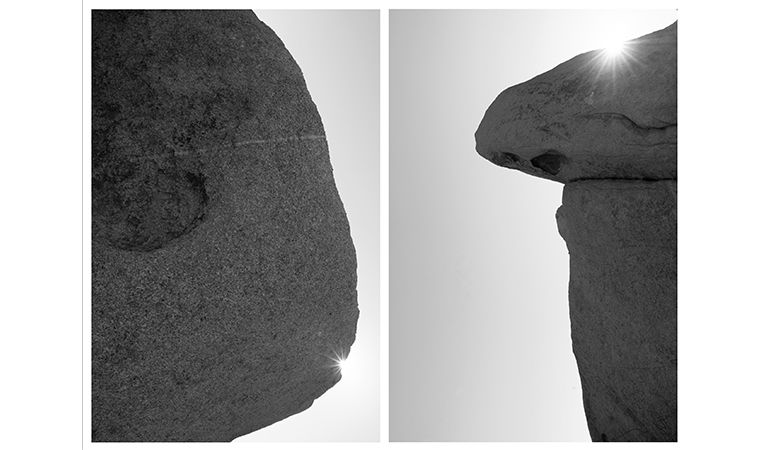Fandell Participates in National Park Artist Residency Program
April 18, 2025
Ken Fandell, professor of art at Harvey Mudd College, recently completed a residency with the Joshua Tree National Park Artist-in-Residence Program, volunteering his time and creativity to interpret the resources of the national park in his own unique way.
From Jan. 27 to Feb. 17, Fandell stayed at the residence in Big Rock Campground in Joshua Tree, making photographs of the park’s vast landscapes and unique geological features. An artist who explores themes of place, formalism, time, histories, iterative practice and the interplay between the artist’s hand and machine processes, Fandell challenged himself to “come up with something that’s not cliche and superficial in this landscape that is so familiar and photographed.”
The residency provided a unique opportunity for Fandell, who holds the Michael G. and C. Jane Wilson Chair in Arts and the Humanities and is on sabbatical until fall. He was able to immerse himself deeply in the landscape and focus without distractions. Fandell first visited Joshua Tree in 2012 when Michael Wilson ’63 asked if he’d like to take a break from the College’s annual Saddle Rock retreat to visit the park.
“I’d never been to Joshua Tree, and I remember being immediately amazed by the sheer scale of it,” Fandell says. “Never had I felt so close to personally experiencing the infinite. And I surf; I’m out on the ocean all the time. But there was something about the weirdness of the desert, where there’s little, tiny rocks and big, giant, giant rocks. And some of them are in your face and are tiny, some are in your face and huge, and some of them are really far away. Scale gets confused and quantity gets confused. Everything was overwhelming.”
The solitude of the residency allowed Fandell to create images that show the park and its features in new ways. He explored his ideas of scale and the infinite nature of the desert environment. “One of the things that I liked about doing this is that the rocks are so easily anthropomorphized. You see an eye and a weird mouth there or body part … another mouth,” he says.
Fandell has compiled rock images, which show the sun rising or setting over the rocks from multiple perspectives, into a collection called “Sunrise, Sunset.” He is also printing a series of images of a juniper tree that he photographed by moonlight and a series of Joshua tree images in which the trees are easily anthropomorphized, like the rocks.
Fandell’s time in Joshua Tree is part of his broader, long-term project exploring landscapes. In June, he will participate in the Wilappa Bay Artist-in-Residence Program in Oysterville, Washington. There, he will collaborate with other visual, musical and literary artists on a multi-modal project concerning the ecosystem of Willapa Bay and its surroundings.
